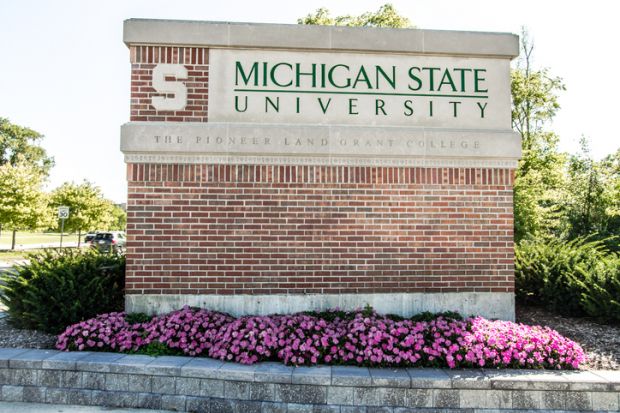Michigan State University will allow all undergraduates to take their courses on a credit/no credit basis, and to decide at any point this semester.
That was one of the new guidelines university officials outlined in a Sunday press briefing at which they also stood by the resumption of classes after a gunman killed three students and injured five others on campus last week.
Many students have said that classes should continue to be cancelled this week, but university leaders said teaching would restart today.
“Returning one week after a mass shooting has left many unsettled,” says a petition signed by nearly 22,000 people as of Sunday afternoon.
“This petition is a proposal to have hybrid or online options for students and parents who are uncomfortable with returning to campus with such haste. With Michigan State University being a public campus and an ongoing investigation, it is believed it is in the students’ best interests to be given a call of action to move forward with the school year.
“Not as a way to evade ‘normalcy’ by not returning to in person classes but safely. After the egregious events that happened this week, student’s and faculty’s safety should not be treated lightly.”
An editorial in The State News, the student newspaper, said, “We can’t physically sit in a classroom on Monday. It’s been less than a week since we lost three fellow Spartans in those classrooms. We aren’t ready. But we also can’t log onto Zoom on Monday and meaningfully engage in our classwork. We’re processing trauma. We’re coming to terms with grief.
“We can’t be worried about a deadline or an exam. We need more time to process without a class to worry about. MSU must extend the pause they’ve given us so we can decide how we need to proceed to feel safe and secure.”
Although the message of the press briefing was to signal the start of a return to normality, the officials said they understood that students would need different time frames to mourn.
Teresa K. Woodruff, interim president of Michigan State, announced that the university would pay for the funeral costs of the three students who were killed and the hospital bills of the five who were injured.
She also announced that the one of the five injured students is now in a stable condition, while the others remain in a critical condition. She said the university would stick to its policy of not releasing the names of those students, even if some of the students or family members were doing so.
One of those students is John Hao, who is 20 and from China, The Detroit News reported. He was paralysed from the chest down. Mr Hao’s parents, who do not speak English, have travelled to be with him.
Thomas Jeitschko, the interim provost, has urged faculty members to be flexible and patient with students.
“Please extend as much grace and flexibility as you are able with individual students, now and in the coming weeks, for example by recording a lecture or adjusting a student’s deadline,” he wrote in a letter on 17 February. “If you have extenuating circumstances, please discuss them with your chair or dean.”
At Sunday’s briefing he said it was important for students to have time to make a decision on pass-fail courses any time in the semester.
Instructors have been urged to avoid “heavy lifts” in class, especially during the next few weeks, Dr Jeitschko said. Instructors are also working to revise their syllabi. He stressed that this would not be a “normal” semester and noted that professors are in mourning, too, and want to help students.
Michigan State announced that no classes would be held in either of the two buildings where the shootings took place. More than 300 classes have been moved to other buildings, in some cases to rooms that haven’t been used as classrooms in the past.
This is an edited version of a story that first appeared on Inside Higher Ed.
Register to continue
Why register?
- Registration is free and only takes a moment
- Once registered, you can read 3 articles a month
- Sign up for our newsletter
Subscribe
Or subscribe for unlimited access to:
- Unlimited access to news, views, insights & reviews
- Digital editions
- Digital access to THE’s university and college rankings analysis
Already registered or a current subscriber? Login








